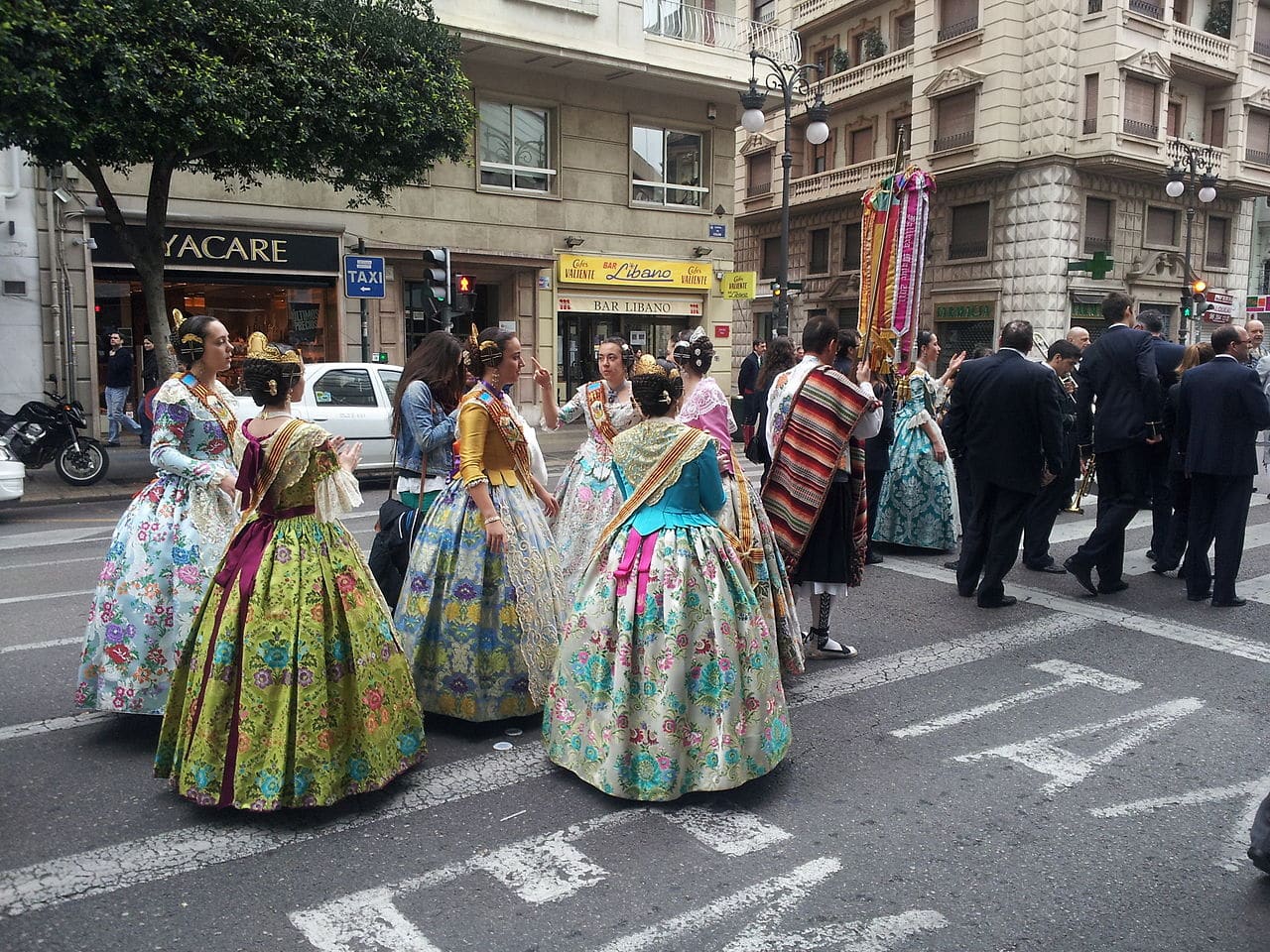
If we want to talk to you about typical clothes of Spain, the first thing we must do is clarify that there is no single traditional Spanish clothing. as it happens in France, Italy and other ancient nations, folklore has its roots in very distant times even before its birth as a country and is very varied.
Therefore, we can talk to you about the typical costume of Madrid, Catalonia or Andalusia. And even in each autonomous community there is more than one traditional clothing. But we cannot show you the typical clothes of Spain. Therefore, we will do so. We will introduce you to the main costumes of some communities that seem to us to be very representative of both their folklore and the common Hispanic substratum.
Galician typical costume
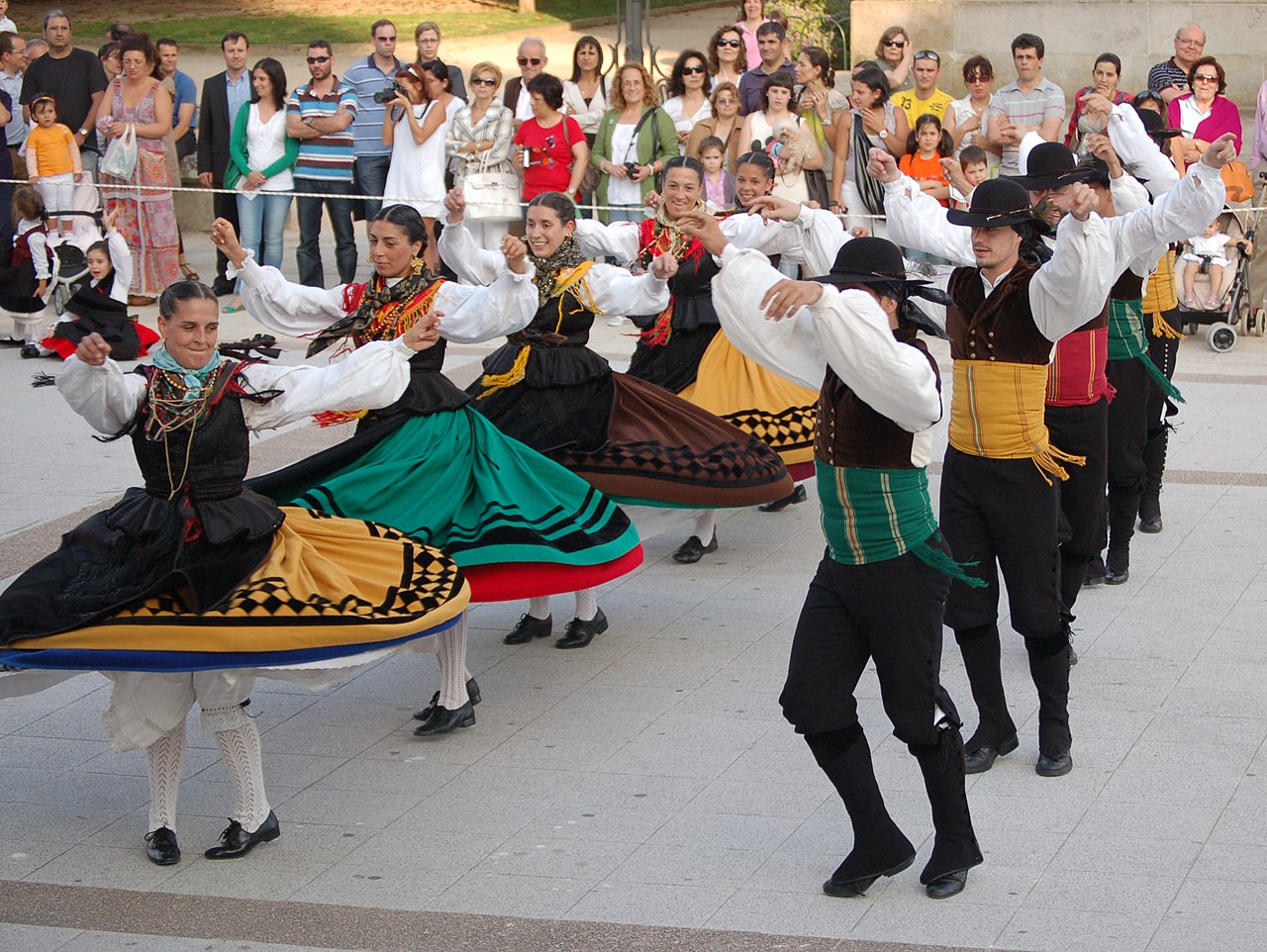
A Galician folkloric group dressed in the typical clothing of the region
We begin our journey through the typical clothing of Spain by talking about the Galician costume, one of the oldest in the Iberian Peninsula. In addition, it is representative due to its resemblance to the Asturian and even with the north of Portugal. Also, as with other traditional clothing, it has its origin in the clothes they used peasants and popular classes a hundred or two hundred years ago.
The typical clothing of Galicia for women consists of a long red skirt on which is placed un keep it or big apron decorated with rhinestones. Under it are petticoats and bloomers and, as footwear, flip-flops or clogs. On top, she wears a white shirt with puffed sleeves and a closed neck. Sometimes she also wears a doublet, but always a dengue or velvet piece that is worn on the back and crossed in front. She also wears a shawl or a jacket, sometimes. Finally, ornaments are hung on her chest and a scarf is placed on her head.
On the other hand, the typical men's suit in Galicia is simpler. They wear knee-length trousers under which the plums or white linen breeches. Between the knee and the feet go the leggings and, as footwear, the clogs. Also, a girdle is put on the waist. As for the upper part, it consists of a white shirt and, over it, a vest or jacket. Finally, on the head they put the montera. This garment, which dates back to the Middle Ages, is different depending on the region. For example, in Galicia it is triangular, large and adorned with colored wool. In contrast, the Asturiana is smaller, equally triangular and unadorned.
Aragon suit, another classic among the typical clothes of Spain
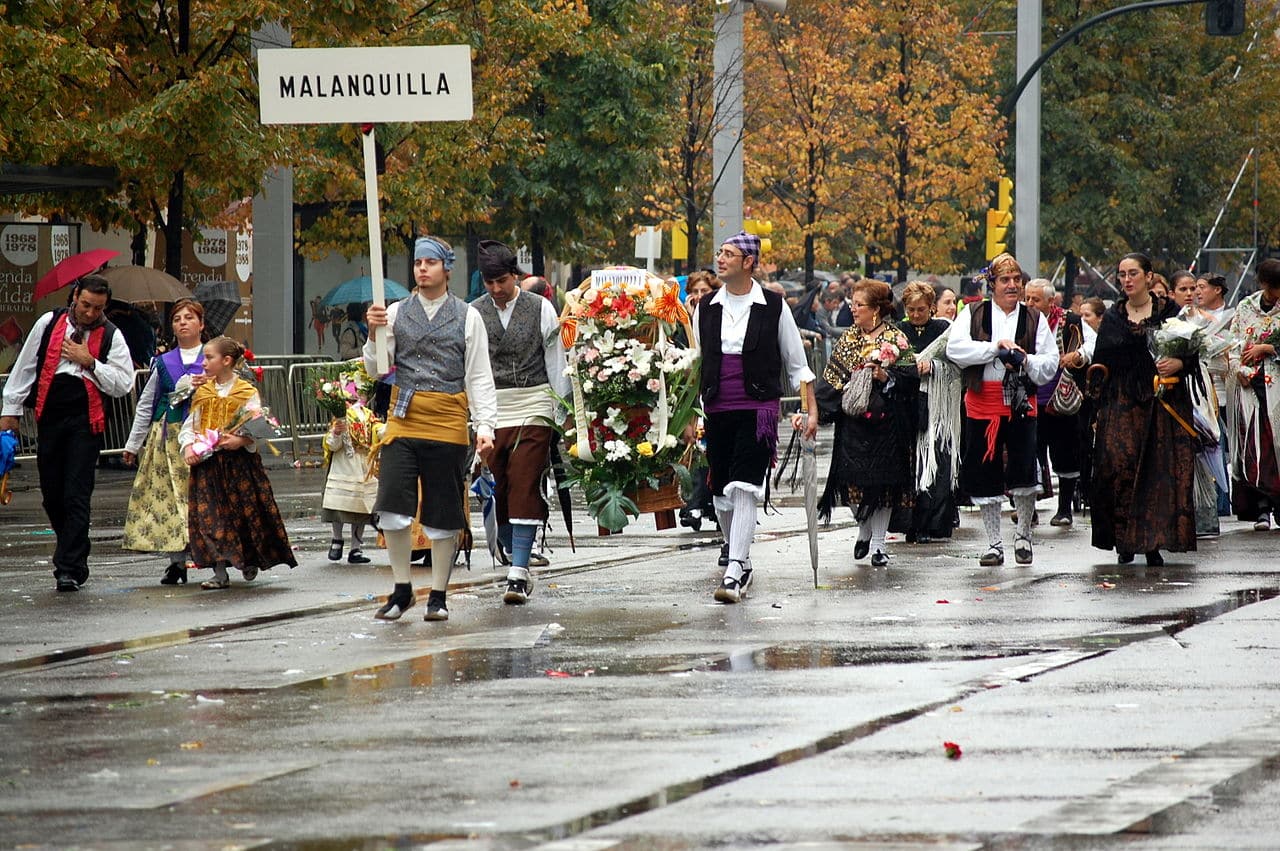
Typical costumes of Aragon
We now turn to the community of Aragón to tell you about another of the oldest traditional clothing in our country. It also comes from the popular way of dressing of those who were known as chumps and chumps. The great symbol of this clothing is the cachirulo, name given to the male headdress. It is a colorful scarf folded in several folds that wraps around the head from behind and protrudes from the forehead. It is so old that, according to experts, it could date back to Muslim times, although it was used until the XNUMXth century.
Together with the cachirulo, the Aragonese suit for men consists of knee-length black trousers that can be made of velvet or cloth. On the torso they wear a white shirt and, over it, a vest of the same fabric as the pants. At the waist is a red sash and esparto sole espadrilles on the feet.
As for the female costume of Aragon, we can separate it into two classes: the gala and the daily. The latter, called peasant, is made up of a petticoat over which a skirt and an apron go. Also, on the torso is a white blouse also called chambra and a cotton mantle.
Regarding the party dress, the skirt is similar, but made of nobler fabrics such as silk. Also, the blouse is more fitted and of varied colors. Finally, the shawl can be of Manila or equally silk with hand embroidery.
Typical costume of Castilla y León
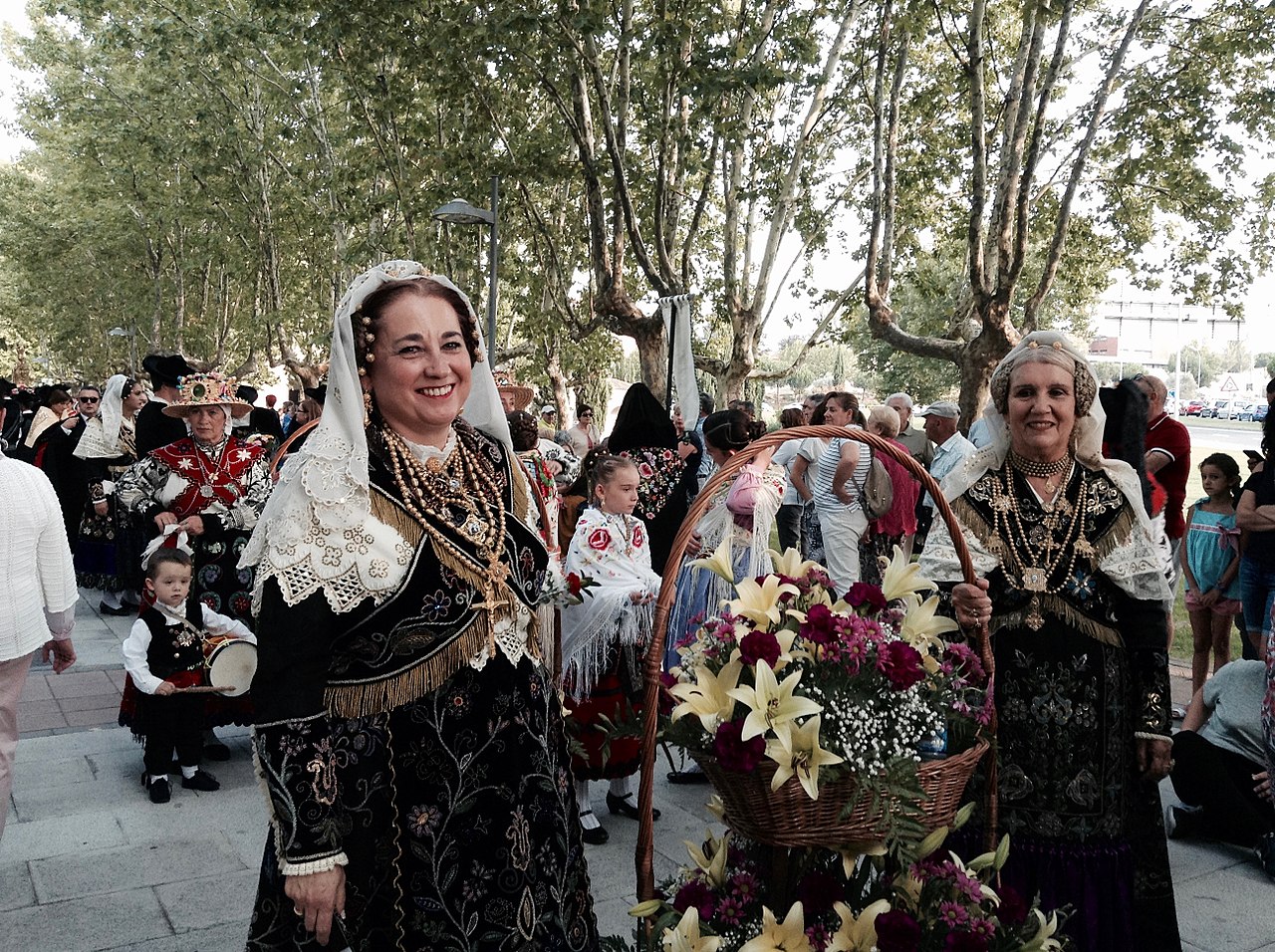
Salmantinas dressed in the charro suit
The costume of Castilla y León also varies according to the provinces we are talking about. For example, charro clothing is characteristic of Salamanca. But in this case we can explain to you several common elements in both women's and men's.
Thus, the latter is made up of black pants and socks at the bottom that are completed with shoes of the same color, generally with buckles. On the torso they wear a white shirt and a vest, both with embroidery. Sometimes they also wear a jacket and always a belt around their waist. They can even use a castilian cloak or Calañés hat.
For its part, the female suit consists of a white linen shirt and, over it, a bodice or a jacket. They carry on top a dengue tied at the back. Also, at the bottom is a long skirt and, on top of it, one or more aprons. These are usually adorned with patterns or embroidery. As for the hair, it can be tied up in a bun or hidden under a scarf.
Typical costume of Madrid
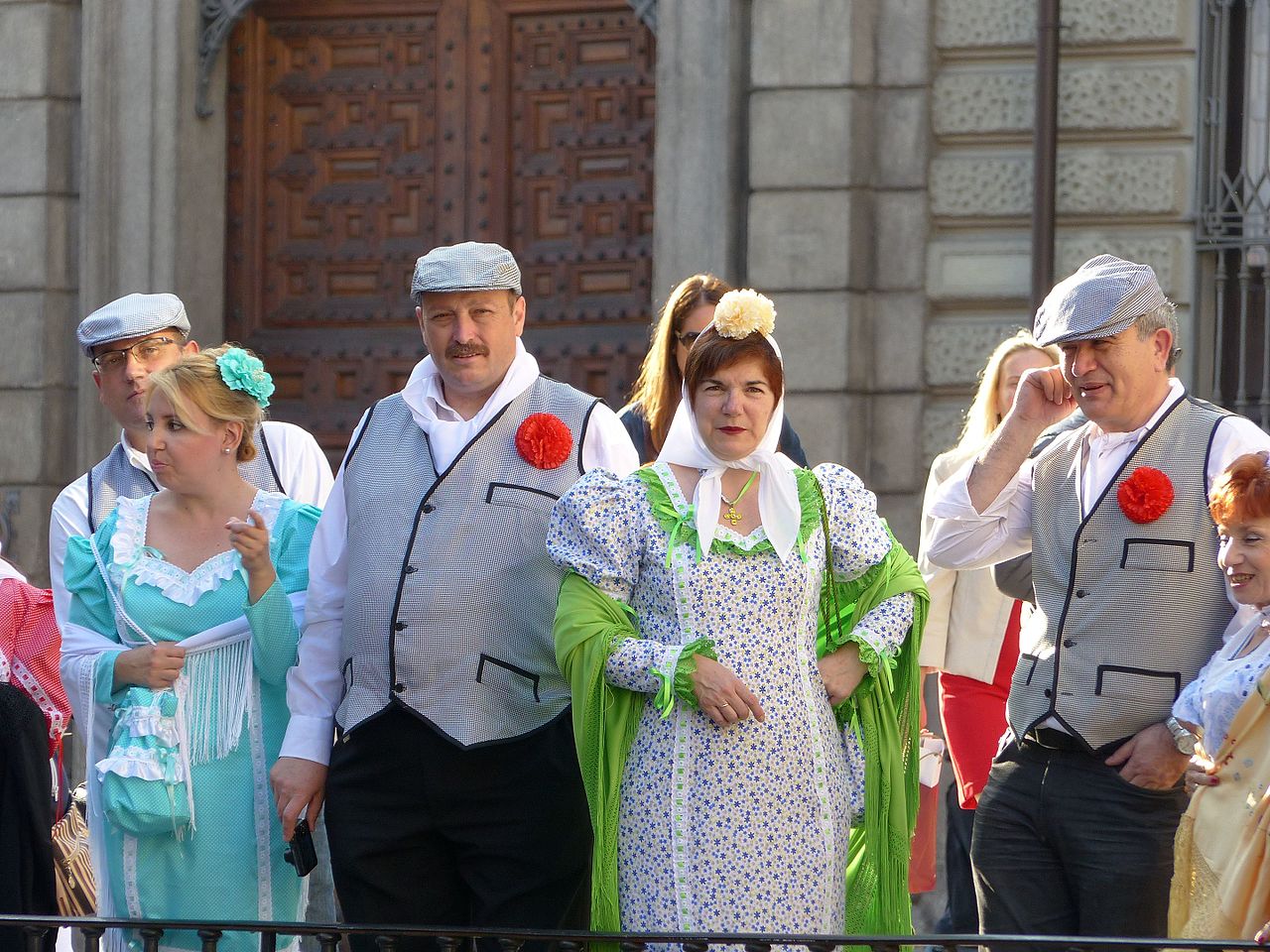
Madrid suits, which constitute one of the most famous typical clothes of Spain
We now come to one of the most famous typical clothes of Spain. This is because it has appeared in many films, plays and even operettas. We talk about the calls chulapo and chulapa costumes because they were used by the popular classes of the capital a hundred or a hundred and fifty years ago.
The one for women consists of a dress with a fitted waist and a long skirt with ruffles. The sleeves are long and usually puffy. She also wears embroidery on the neckline. Also, on her head they put a scarf and, sometimes, one or two flowers. But the quintessential piece of typical Madrid clothing is the Manila shawl, which cannot be missed.
For his part, the man usually wears long black pants and shoes of the same color. On his torso he wears a white shirt and, over it, a vest and fitted jacket. Likewise, in the head it is obligatory the cap with visor.
As with other typical Spanish clothes, the Madrid suit is still widely used at certain festivals. For example, those of Dove and Pilgrimage of San Antonio de la Florida.
Typical costume of Catalonia
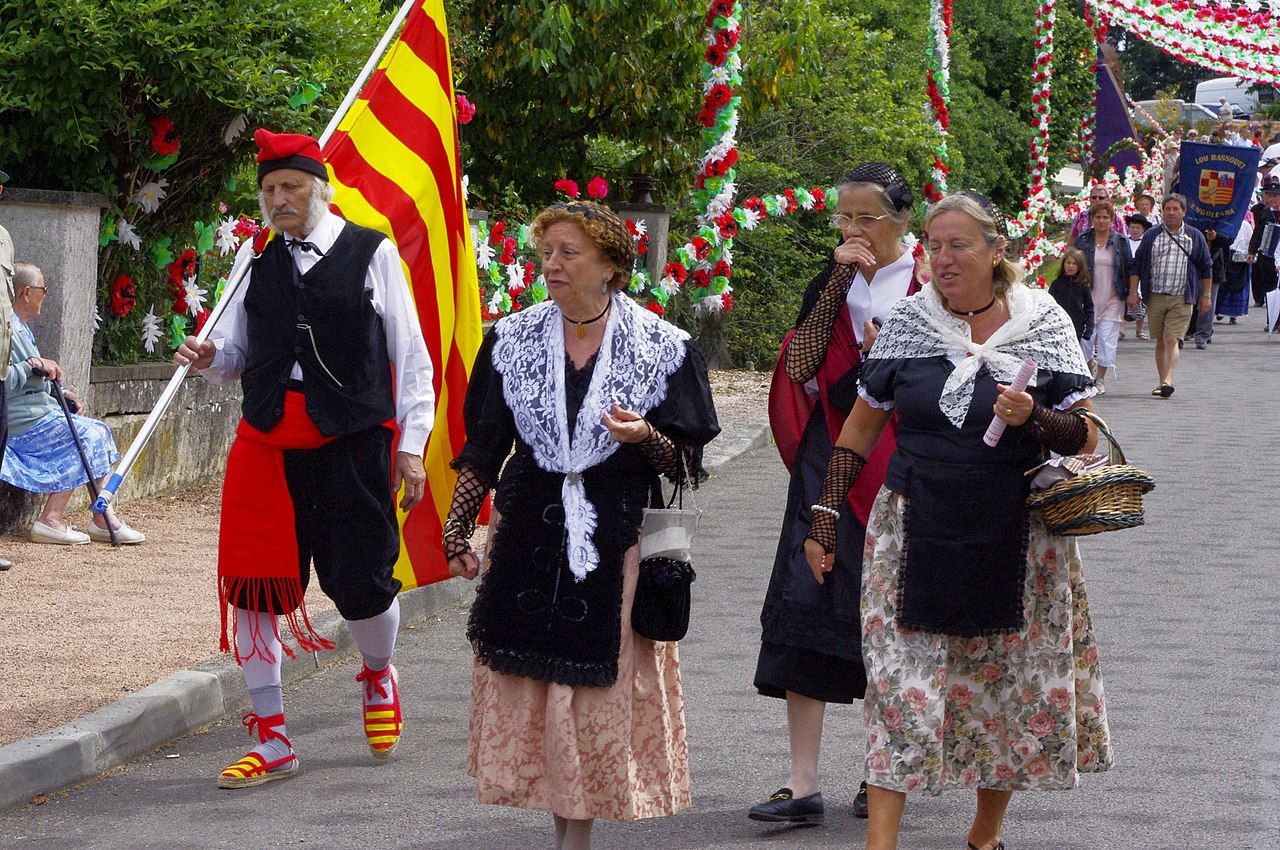
Catalonia costumes
The Catalan community also has various typical clothing. But, as for women, the suit consists of a long and wide skirt on which a silk apron or apron goes. At the top you put a doublet, usually black velvet and with sleeves up to the elbows. Sometimes the latter is replaced by a silk jacket. Finally, in the head is put a hairnet which is usually decorated with beads or ribbons.
For its part, the men's suit has a unique and representative garment. we talk about the barretina, a red or purple hat that is folded over the head. A white linen or cotton shirt is worn on the torso and, over it, the so-called jupeti, which is a black velvet vest. At the waist is a red sash and at the bottom a knee-length pants. This is also usually black velvet. Finally, esparto espadrilles are often used as footwear. However, in cold months, they may also don a full black coat.
Andalusian costume, the most popular typical clothing of Spain
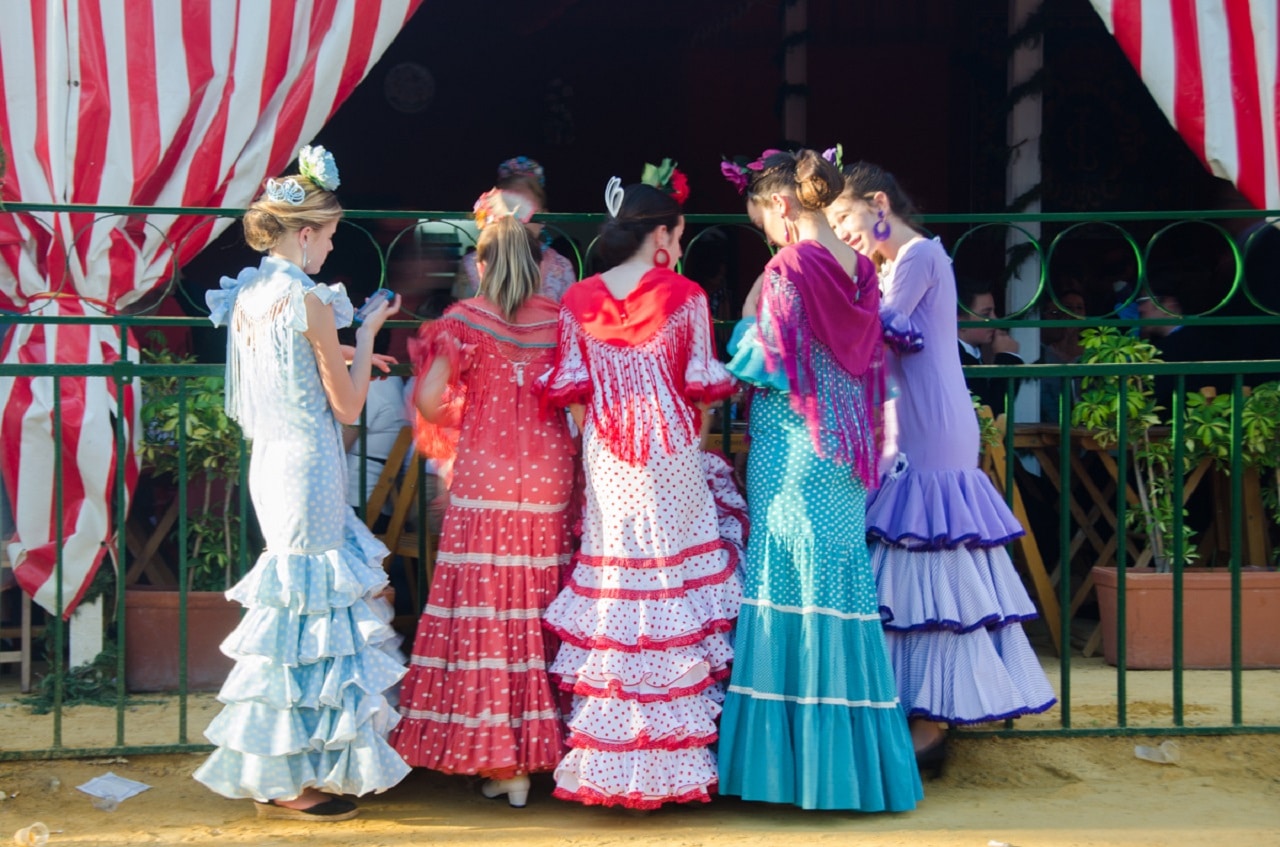
Seville costumes
We now come to Andalusia to talk to you about what, perhaps, is the most well-known typical clothing of Spain abroad. We are referring to Sevillian clothing, which you can see at events such as the fairs of Malaga or Seville itself and which is also called flamenco.
The women wear tight-fitting dresses in bright colors or polka dots that end in lots of flyers. They can also accompany it with a shawl. The shoes are usually made of patent leather and the hair is tied up and adorned with flowers or a comb.
As for the male suit, it is made up of long black pants that are tight at the waist. The shirt is usually brightly colored and is sometimes adorned with striking frills or ruffles. On top he puts on an equally tailored jacket and, on his head, a cordovan type hat. However, this can be replaced by other varieties such as, for example, the pavero or the catite, in turn typical of bandit prints.
Tenerife typical costume
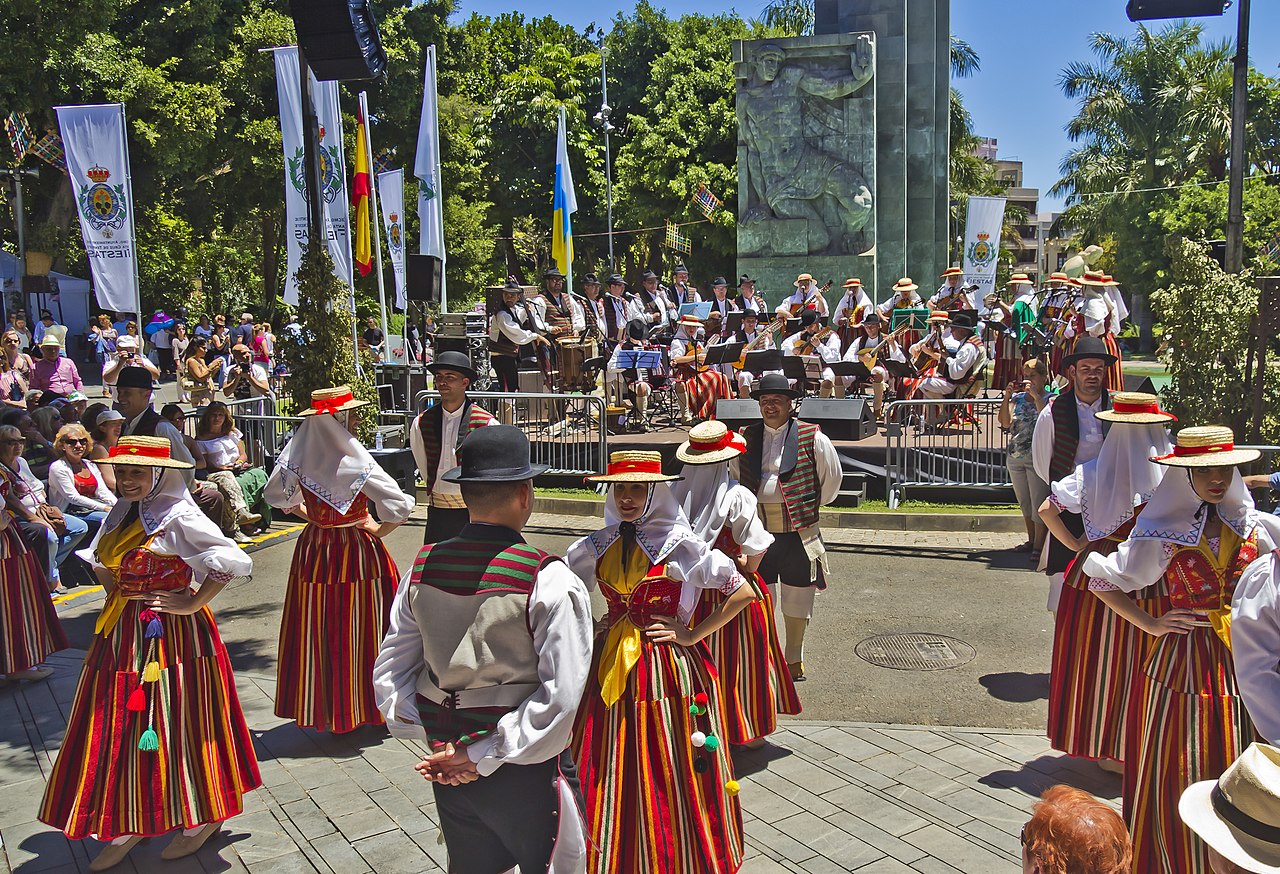
Tenerife residents dressed in the typical costume of men and women
We now travel to Tenerife to talk to you about one of the typical clothing of Canary Islands. The women wear a long red or black wool skirt. In addition, it usually has brightly colored longitudinal ribbons. Beneath it is an embroidered petticoat and an embroidered apron on top. At the top, she wears a shirt and a black or red bodice. They also wear stockings and, on their heads, a hat placed on a scarf.
As for the men, they wear black wool pants that reach the knee. Under this, they wear embroidered leggings equally dark. On her torso is a white embroidered shirt and a vest. Finally, to keep warm, they can use the so-called blanket spreader.
In conclusion, we have shown you some representative costumes of the typical clothes of Spain. However, we could also have shown you the fallera clothing, traditional in Valencia, or the maja from Madrid that comes from the XNUMXth century and that immortalized Goya in some of his paintings. Don't you think that these costumes make up an extraordinary variety and an enormous folklore richness?